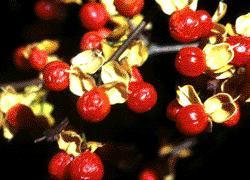
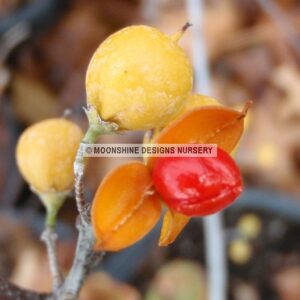
American Bittersweet, Sexed Plants
American bittersweet is a native woody and shrubby climber, growing over trees or fences. It has smooth thin leaves 2 to 4 inches long and about half as wide. The small greenish-white flowers are produced in June in short clusters. The fruit is a round, orange-yellow capsule which opens in autumn, disclosing the scarlet-colored seed pod. The seed capsules remain on the plant well into the cold season and provide food for birds in the winter. Fruits are eaten by songbirds, ruffed grouse, pheasants, bobwhite and squirrel. Old fruits are eaten as survival foods by many birds and animals in late winter. Fruits should NOT be eaten by humans. While not extremely toxic, they will “clean you out at both ends”. Bunches of twisted branchlets, loaded with fruit, are very decorative and the plant is disappearing in many places because of the ruthless methods of market pickers. Our stock is not from the wild!! We have selected ‘stock’ plants which grow on site here and have chosen the best over the years for the most desirable characteristics.
Way back in the dark and mysterious past, many shepherds hung bittersweet around the necks of those sheep which were suspected to be under the evil eye. I don’t think it is really necessary myself. Save this bit of lore for your next trivia game.
Often planted as an ornamental vine for the showy fruits. A good climber on trellises, arbors, porches. Fast growing. Decorative berries and twisted vines make interesting projects.
You will need both male and female plants to produce berries! 1 male can pollinate 4-5 female vines. MUST be planted within 30 feet of each other.
Light: Partial to full sun. Best fruit in full sun.


American Bittersweet, unsexed
American bittersweet is a native woody and shrubby climber, growing over trees or fences. It has smooth thin leaves 2 to 4 inches long and about half as wide. The small greenish-white flowers are produced in June in short clusters. The fruit is a round, orange-yellow capsule which opens in autumn, disclosing the scarlet-colored seed pod. The seed capsules remain on the plant well into the cold season and provide food for birds in the winter. Fruits are eaten by songbirds, ruffed grouse, pheasants, bobwhite and squirrel. Old fruits are eaten as survival foods by many birds and animals in late winter. Fruits should NOT be eaten by humans. While not extremely toxic, they will “clean you out at both ends”. Bunches of twisted branchlets, loaded with fruit, are very decorative and the plant is disappearing in many places because of the ruthless methods of market pickers. Our stock is not from the wild!! We have selected ‘stock’ plants which grow on site here and have chosen the best over the years for the most desirable characteristics.
Way back in the dark and mysterious past, many shepherds hung bittersweet around the necks of those sheep which were suspected to be under the evil eye. I don’t think it is really necessary myself. Save this bit of lore for your next trivia game.
Often planted as an ornamental vine for the showy fruits. A good climber on trellises, arbors, porches. Fast growing. Decorative berries and twisted vines make interesting projects.
You will need both male and female plants to produce berries! 1 male can pollinate 4-5 female vines. MUST be planted within 30 feet of each other.
Light: Partial to full sun. Best fruit in full sun.


American Bittersweet, unsexed Wholesale
American bittersweet is a native woody and shrubby climber, growing over trees or fences. It has smooth thin leaves 2 to 4 inches long and about half as wide. The small greenish-white flowers are produced in June in short clusters. The fruit is a round, orange-yellow capsule which opens in autumn, disclosing the scarlet-colored seed pod. The seed capsules remain on the plant well into the cold season and provide food for birds in the winter. Fruits are eaten by songbirds, ruffed grouse, pheasants, bobwhite and squirrel. Old fruits are eaten as survival foods by many birds and animals in late winter. Fruits should NOT be eaten by humans. While not extremely toxic, they will “clean you out at both ends”. Bunches of twisted branchlets, loaded with fruit, are very decorative and the plant is disappearing in many places because of the ruthless methods of market pickers. Our stock is not from the wild!! We have selected ‘stock’ plants which grow on site here and have chosen the best over the years for the most desirable characteristics.
Way back in the dark and mysterious past, many shepherds hung bittersweet around the necks of those sheep which were suspected to be under the evil eye. I don’t think it is really necessary myself. Save this bit of lore for your next trivia game.
Often planted as an ornamental vine for the showy fruits. A good climber on trellises, arbors, porches. Fast growing. Decorative berries and twisted vines make interesting projects.
You will need both male and female plants to produce berries! 1 male can pollinate 4-5 female vines. MUST be planted within 30 feet of each other.
Light: Partial to full sun. Best fruit in full sun.

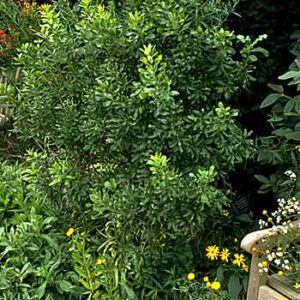
Bayberry, Northern
As a landscape plant, Bayberry is excellent for massing, borders or combining with broadleaf evergreens. It responds well to a periodic pruning to keep it’s form. An added advantage is that Bayberry has no serious insect or disease problems! Suited for Zones 2-9a.
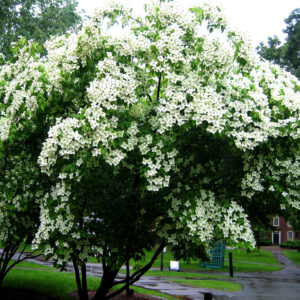

Dogwood, Kousa
Rounded shape with horizontal branching growing to about 20 feet at maturity.
Large, pointed, white to pinkish bracts produced three weeks after our native flowering dogwood. Fruits medium, reddish pink, raspberry-like, very attractive to birds. Foliage scarlet in fall.
CANNOT SHIP TO CA
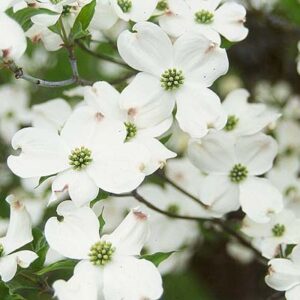
Dogwood, White Flowering
The flowering dogwood is unquestionably one of the most popular of our native flowering trees.
Height to 30 feet, with a rounded, open, horizontal branching habit. Moderate growth. The branches are covered with spectacular white bracts of flowers in Spring before leaves appear.
Fall fruits are glossy, red, and persist well into late fall. Foliage turns a bright scarlet in fall
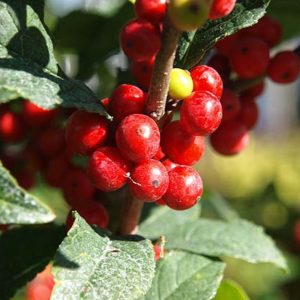
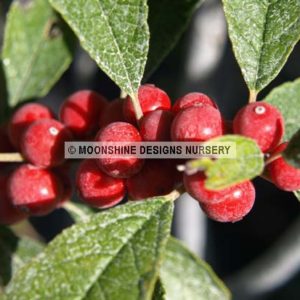
Holly, Winterberry, Afterglow
One of the best plants for fall and winter color.
Female plants produce bright red berries in profusion in early fall while leaves are still green and remain until mid-winter.
Berried stems often used in seasonal dried arrangements.
Likes acidic soil, will tolerate wet, swampy conditions.
Native to the northeastern United States.
Winterberry is dioecious, so both male and female plants are needed for fruit production.
Zone: 4-9
Height: 5-8 Feet
Spread: 5-8 Feet
Winterberry’s bright red berries provide color in winter after the leaves have fallen off. The plant grows in sun or partial shade and a rich, well- drained soil, although it tolerates swampy areas. The fruits are often eaten by birds. Also used at Christmas for decorations.
Use Jim Dandy as the male pollinator.
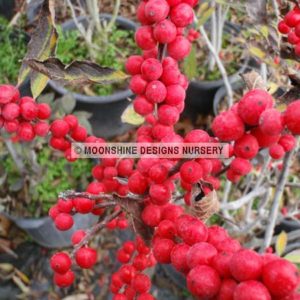
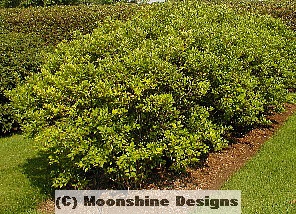
Holly, Winterberry, Berry Heavy
A spectacular winter show with its heavy set of large, bright red berries. This selection rivals all other winterberry selections for its sheer mass of fruit. Use Jim Dandy as the male.
Zone 4-7
6-8 feet
Full Sun to Partial Shade
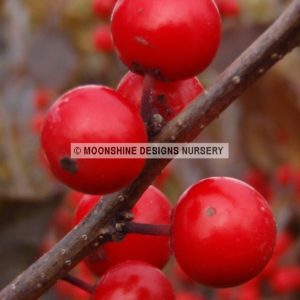

Holly, Winterberry, Berry Nice
BERRY NICE® Winterberry Holly
The dark red berry display is so vivid, the original plant was selected by sight at a distance of 1/4 mile. It’ll make you stop and take notice. Good clean foliage.
This lovely native is well adapted to wet soils, so it’s a perfect choice for near a pond or stream. The fruit appears in autumn and remains until early spring when the returning birds feast on the showy fruit. Berry Nice makes a great plant for cut arrangements. Planting a male selection in near proximity greatly improves the fruiting of Winterberry.


Holly, Winterberry, Jim Dandy Male
One of the best plants for fall and winter color.
Female plants produce bright red berries in profusion in early fall while leaves are still green and remain until mid-winter. This male variety is required for berry production on the females. Allow one male for every three females. Plants should be within 50′ of each other for best fruit set.
Berried stems often used in seasonal dried arrangements.
Likes acidic soil, will tolerate wet, swampy conditions.
Native to the northeastern United States.
Winterberry is dioecious, so both male and female plants are needed for fruit production.
Zone: 4-9
Height: 9 Feet
Spread: 9 Feet
May be pruned shorter.


Holly, Winterberry, Southern Gentleman Male
One of the best plants for fall and winter color.
Female plants produce bright red berries in profusion in early fall while leaves are still green and remain until mid-winter. This male variety is required for berry production on the females. Allow one male for every three females. Plants should be within 50′ of each other for best fruit set.
Berried stems often used in seasonal dried arrangements.
Likes acidic soil, will tolerate wet, swampy conditions.
Native to the northeastern United States.
Winterberry is dioecious, so both male and female plants are needed for fruit production.
Zone: 4-9
Height: 9 Feet
Spread: 9 Feet
May be pruned shorter.
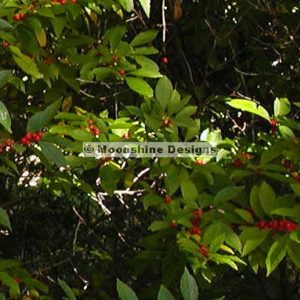
Holly, Winterberry, Sprite
One of the best plants for fall and winter color.
Female plants produce bright red berries in profusion in early fall while leaves are still green and remain until mid-winter. This male variety is required for berry production on the females. Allow one male for every three females. Plants should be within 50′ of each other for best fruit set. Use Southern Gentleman as the male.
Berried stems often used in seasonal dried arrangements.
Likes acidic soil, will tolerate wet, swampy conditions.
Native to the northeastern United States.
Winterberry is dioecious, so both male and female plants are needed for fruit production.
Zone: 4-9
Height: 3-4 Feet
Spread: 3-4 Feet
May be pruned shorter.
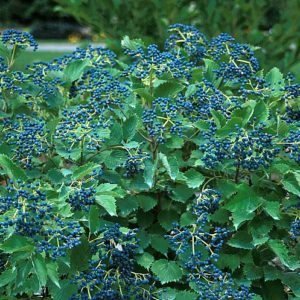
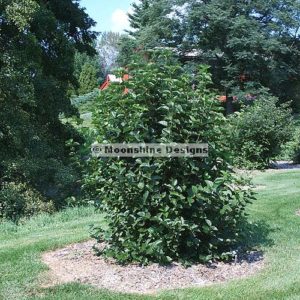
Viburnum, Blue Muffin™
A new compact selection of Arrowwood Viburnum! The perfect sized plant for residential landscapes. This compact beauty has loads of white spring flowers, and an impressive display of rich blue berries. Makes a great low hedge or foundation plant. Good container growing plant. Attracts songbirds. Berries are NOT edible.
The habit is dense and multistemmed with arching branches. The foliage is glossy dark green, fall colors are yellows, reds and purples.
Hardiness: USDA Zone 3-9
Size: 3 to 5 feet 3 to 4 feet wide
Exposure: Very adaptable! Full sun, partial shade or shade
Soil: Adaptable to many soils, moderate moisture
Uses: Not only is this plant showy, it’s very utilitarian. Use it as a small hedge, a foundation plant or on the edge of a woodland setting.
